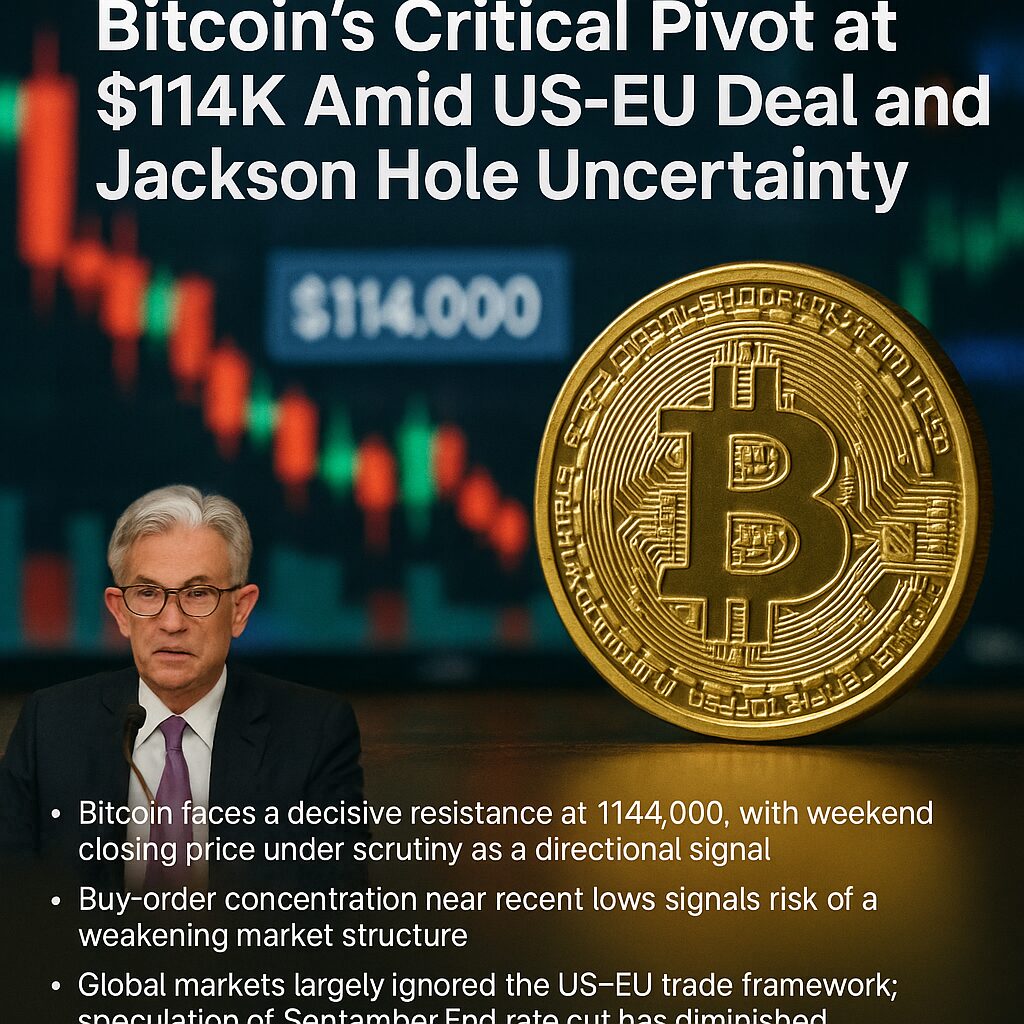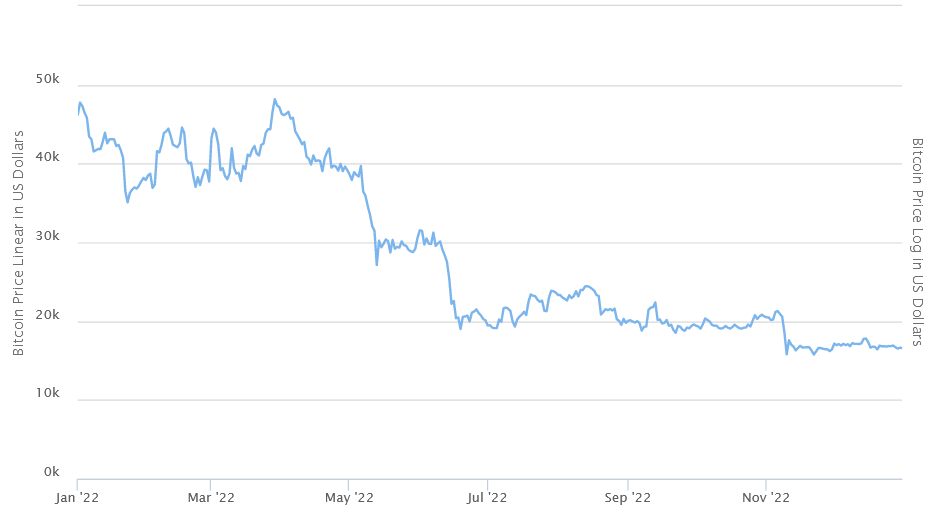
Main Points :
- Bitcoin faces a decisive resistance at $114,000, with weekend closing price under scrutiny as a directional signal.
- Buy‑order concentration near recent lows signals risk of a weakening market structure.
- Global markets largely ignored the US–EU trade framework; speculation of September Fed rate cut has diminished.
- Looking ahead: trading behavior through the weekend and Powell’s Jackson Hole speech critical to near‑term trend.
Market Structure & Buy-Order Concentration
Bitcoin recently tested the $114,000 level, which now functions as a short‑term barrier against bullish advances. Despite gains to this level, widespread resistance continues to stall upward momentum. Analysts such as Rekt Capital note that Bitcoin “clearly declined from the $114K resistance on the daily chart,” while Daan Crypto Trades identifies a “notable localized low zone” around $109,850–$111,900, warning that a breach below this range could underscore a fragile market structure. Buy‑orders in the order book appear densely clustered near recent lows—further indication of uneven support distribution and volatility risk.

This chart (above) vividly maps Bitcoin’s recent descent to around $114K and the consolidation of buy orders—a visual touchstone for tactical traders.
US–EU Trade Deal Matters Little for Crypto
Despite the formalization of a US–EU Framework Agreement for reciprocal, fair trade, financial markets remained unconvinced. The agreement, which plans to reduce tariffs to approximately 15% on key goods, failed to ignite crypto market enthusiasm. Bitcoin’s decline suggests the deal had minimal effect on sentiment or trading behavior.
Fed Rate Cut Expectations Fade
Market attention has shifted to the Federal Reserve’s Jackson Hole symposium. Once‑prominent expectations for a September rate cut have significantly receded. Tools like Kalshi now place the probability of unchanged rates at 36%—a level not seen since August 1—while CME’s FedWatch pegs it at 25%.
Mosaic Asset Management emphasizes that the FOMC minutes revealed a prevailing concern over inflation risks, overshadowing employment worries. Therefore, upcoming remarks from Powell may further dampen hopes for rate softness or conversely act as a catalyst if tone shifts.
Current Price and Investor Behavior
Bitcoin’s price has retracted from its August all‑time high near $124K, dropping approximately 8% to around $113–114K.
Notably, trader behavior ahead of Powell’s speech includes profit‑taking, measurable via strong spot selling (Coinbase–Binance spreads) and cautious pricing of Bitcoin options. Meanwhile, whale activity continues: a $568M single whale transfer of roughly 4,999 BTC at near‑$113,800 suggests heavy hands may be repositioning.
Broader Investor Sentiment & Institutional Trends
Institutional interest remains robust. Bernstein projects a continued bull run possibly extending toward 2027, projecting Bitcoin could soar to $200K within 6–12 months, fueled by favorable regulatory developments and adoption trends.
Grasping larger trends, wealthy Asian investors—particularly family offices—are increasing crypto allocations (e.g., ~5%) and embracing advanced strategies like arbitrage. These investors cite regulatory clarity—such as the U.S. GENIUS Act and Hong Kong’s stablecoin rules—and strong returns as motivators.
Summary & Conclusion
In summary, Bitcoin now stands at $114,000—a technical pivot and psychological barrier. Markets shrugged off external stimuli like the US–EU trade deal, and decelerating Fed easing expectations amid Jackson Hole uncertainty have intensified downside risk. A close below the $109,850–$111,900 zone could trigger further weakness, while a resilient close could re-energize bulls.
Key Ultra-Terminal Drivers:
- Weekend close relative to $114K pivot.
- Powell’s tone at Jackson Hole.
- Whale movements and institutional sentiment.
- Extended structural trends, including ETF inflows and regional wealth management interest.

